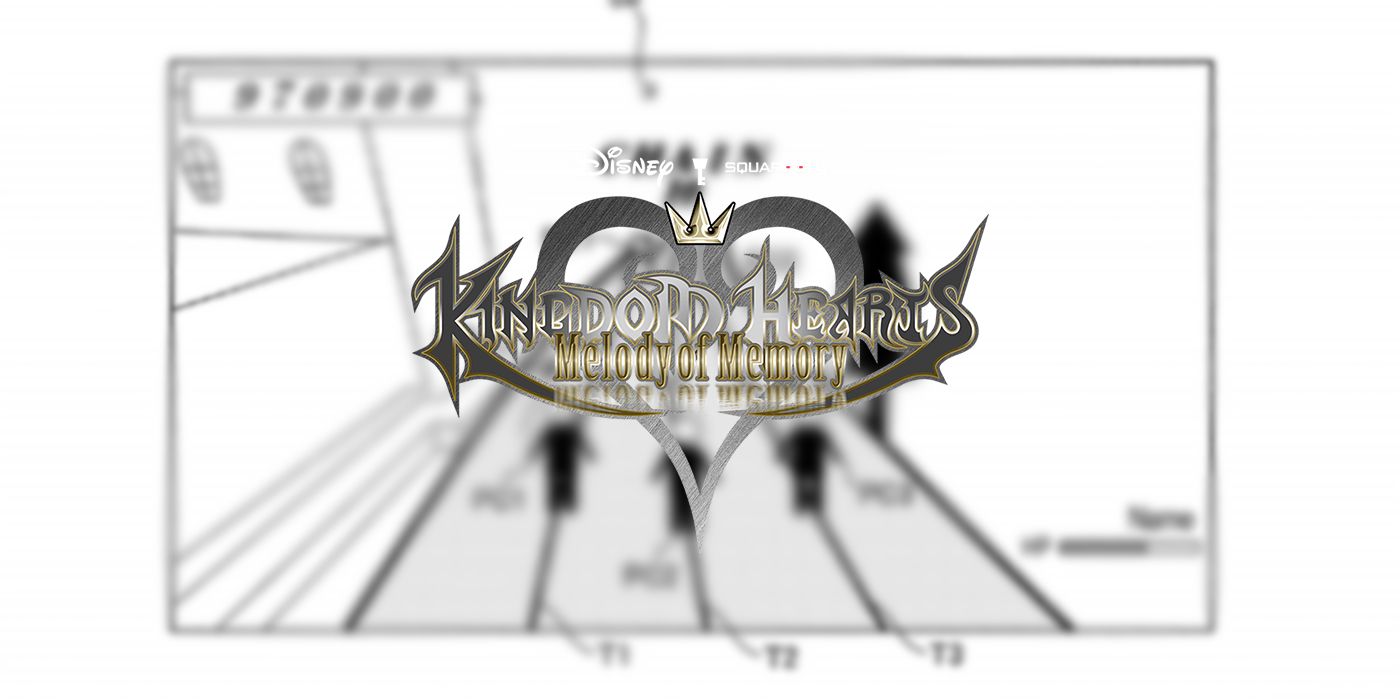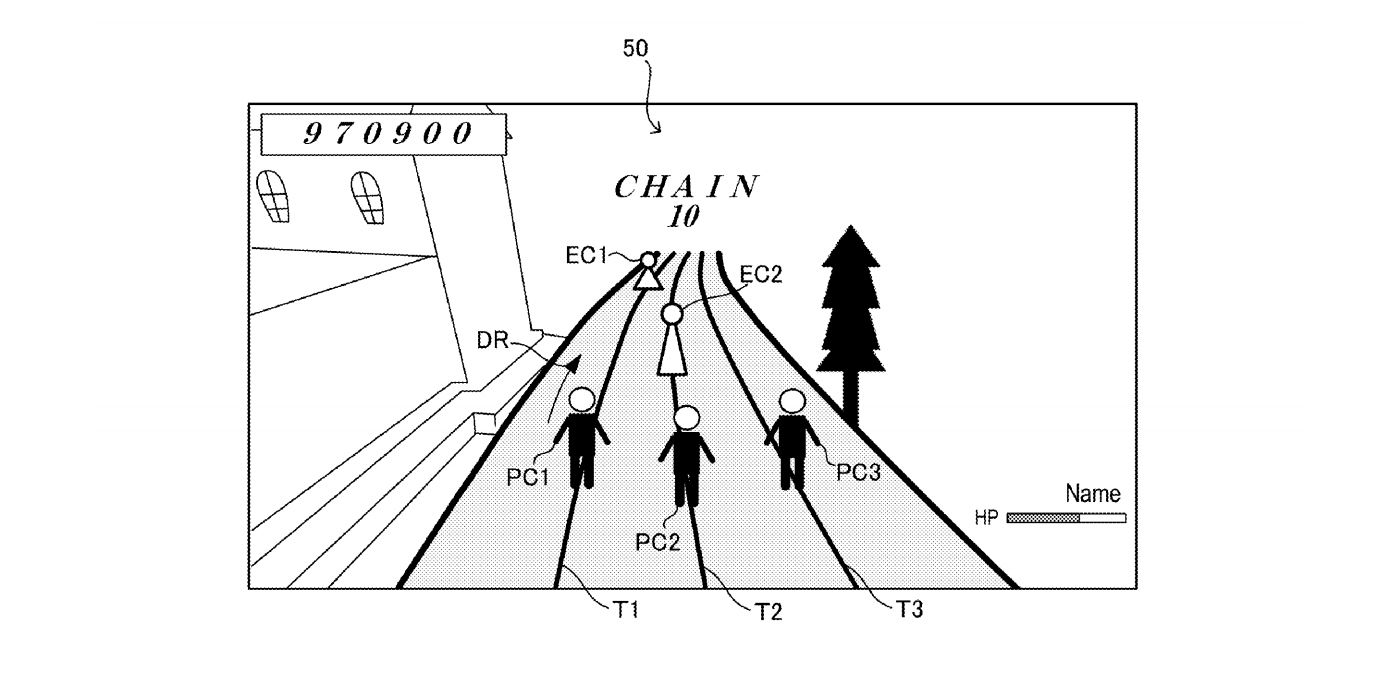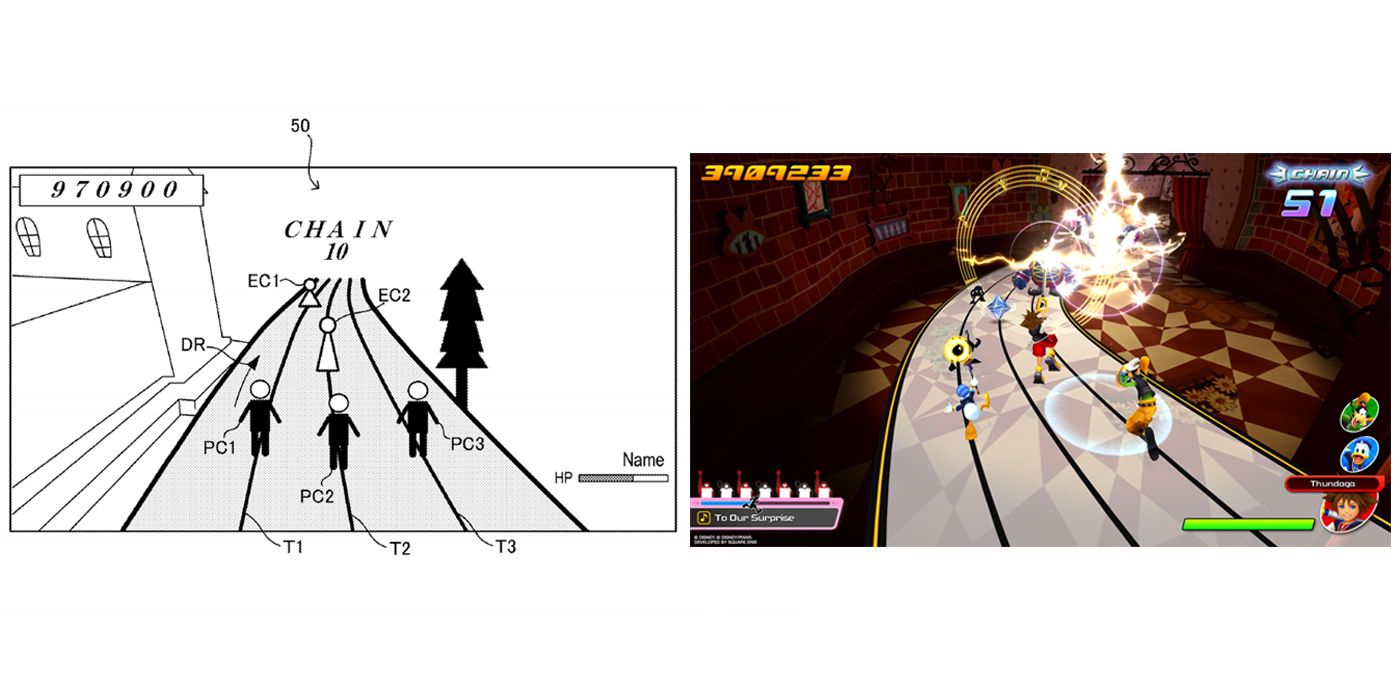Square Enix Patent May Have Been Used To Develop Kingdom Hearts: Melody of Memory

Square Enix isn't the only foreign game studio to file patents with the U.S. Patent and Trademark Office, but a newly discovered patent could have been used for one of their recent games. "Rhythm Game Program and Game System," the patent filed by Square Enix, could be the basis of the gameplay players experience in Kingdom Hearts: Melody of Memory.
Many fans of the Kingdom Hearts series were surprised when a new game was announced earlier this year, and even more were surprised when it was revealed to be a rhythm game. While Kingdom Hearts: Melody of Memory may be the first Kingdom Hearts rhythm action game, it isn't the first rhythm game from Square Enix. Melody of Memory follows Kairi right after the events of Kingdom Hearts 3. In an effort to find Sora, Kairi enters a dream state to search her memories for clues to where Sora might be. In essence, the game retells the Dark Seeker Saga through the music of the series.
The directors of the game, Tetsuya Nomura and Masanobu Suzui, drew inspiration from other rhythm game titles that Square Enix had worked on before. Theatrhythm Final Fantasy and Theatrhythm Dragon Quest originally inspired the gameplay, but the directors wanted the Kingdom Hearts version to be in 3D, as opposed to the 2D style of the Theatrhythm games. In order to make Kingdom Hearts: Melody of Memory, the developers had to build the game from the ground up. There is no guarantee that this patent, "Rhythm Game Program and Game System," is what Square Enix used to make the game. However, it is possible that while creating a system for Melody of Memories, they wanted to patent the system for future use, like the Square Enix patent for multiplayer features.
While the text of Square Enix's patent goes into specific details about different functions of the system, the overall takeaway is that this program was created for 3D rhythm games. The system supposedly makes up for constraints noticed in other 2D rhythm game systems, allowing for flexibility with a "non-limited viewpoint." When deciding on a gameplay system for Square Enix's first Kingdom Hearts rhythm game, the developers surely wanted to make it an engaging experience. There are even multiple similarities between what is described in the patent and what happens in Kingdom Hearts: Melody of Memory. The main image presented in the patent has some useful information to pull from it.

In the image, the party characters (PC1, PC2, PC3) are on a directional movement path (T1, T2, T3), where they will soon encounter enemy characters (EC1, EC2). In the top-left corner, there is what seems to be a scorecard. In the bottom-right corner, there is a health bar, which also indicates that there will be a name above it. In the top-center of the image, is an attack chain counter. Many of these are similar, if not identical, to the UI in Kingdom Hearts: Melody of Memory. Even the "Name" above the health bar is typically where special attacks will be shown in the game. For the 100+ songs in Kingdom Hearts: Melody of Memory, this is the primary setup for gameplay, aside from certain scenes and boss fights.

Since this patent was filed in Japan and the U.S. (March 2019 and March 2020, respectively), before Kingdom Hearts: Melody of Memory was even announced, it is possible that this is the system used for the game. The rhythm game system in the patent could even become the new go-to for Square Enix rhythm games. In what is looking to be a big 2021 for Square Enix, it will be interesting to see if they reveal another 3D rhythm game based on a different IP of theirs.
In the meantime, Square Enix fans will have their hands full with the multiple Final Fantasy games in development, and the 35th anniversary of Dragon Quest. Fans of Kingdom Hearts will be waiting with bated breath for the announcement of a new main Kingdom Hearts title. Until then, players can keep an eye out for any future Square Enix rhythm games.
Kingdom Hearts: Melody of Memory is available now on PS4, Switch, and Xbox One.
Source: U.S. Patent 20200289936, Game Informer

Post a Comment